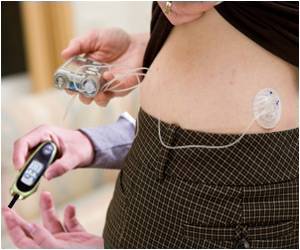This newly described concept exploits a natural mechanism that designated the protective hinge, which is a natural structural feature that evolved more than half a billion years ago to keep the hormone stable in its closed state but foldable and functional in its open state.
‘Glucose responsive insulin therapy sensors will be an important new tool in type 1 diabetes management.’
“The reason a glucose-responsive insulin is important is that the biggest barrier to the effective use of insulin, especially in Type 1 diabetes, is the fear of the consequences of blood sugar going too low,” said Weiss, who is also the Chair of the Department of Biochemistry and Molecular Biology.
Immediate consequences of severely low blood sugar (hypoglycemia) can include delirium, convulsions or loss of consciousness, and repeated episodes of severe hypoglycemia can cause cognitive decline.
On the other hand, chronic high blood sugar (hyperglycemia) can lead to blindness, stroke or amputation. Staying in the desired blood glucose range is a delicate balance that insulin-dependent diabetics face every day.
In the 100 years since the discovery of insulin, its use as a treatment for diabetes has gone through many significant changes.
While the current analog has been designed to sense fructose, this same approach can be used to develop analogs to sense glucose. Other types of glucose-responsive insulins are being developed elsewhere.
The synthetic hinge exploits naturally occurring processes and introduces fewer external or artificial elements compared to other approaches and makes this invention simplicity.
While their study uses fructose as a model (representative of a monosaccharide like glucose), it proves that the synthetic hinge concept works.
The research team is already working on glucose-responsive insulin candidates that open and close at the desired high and low glucose thresholds, respectively 70 to 180 milligrams per deciliter. Revolutionary insulin therapy is closer than we think by replacing the fructose sensor with glucose sensors.
Source: Medindia



